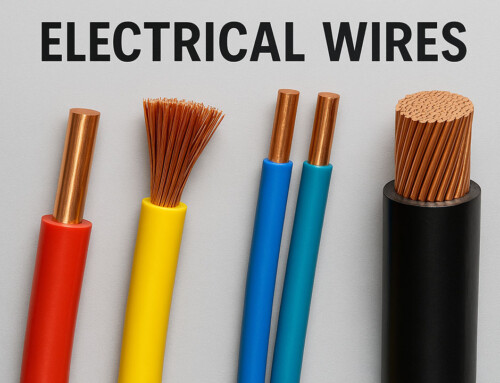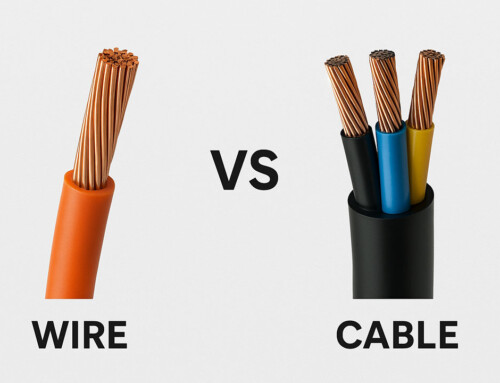Table of Contents
The type of plug you need depends on whether your domestic outlet has three or four prongs. According to modern electrical codes, a 220v plug should have a neutral, ground, and two hot wires. But what if you only have three wires? Can you still wire a 220v socket? The answer is yes, you definitely can!
Are you looking for information on how to wire a 220v plug with 3 wires? If so, you’ve come to the correct link! This blog post provides an overview of the process for wiring a 220v plug with 3 wires, the necessary supplies, and the steps to take. Some general FAQs regarding wiring a 220v plug are also answered. So, let’s get started!
What are the Two Styles of 3-Prong 220 Outlets?
You may encounter two main styles of 3-prong 220 outlets during wiring. One type has a neutral or white wire, and the commonly used red and black hot wires.
The other type requires a ground wire, which can be either bare copper or green insulated, just like the hot wires. Determining your outlet type before proceeding with the wiring process is crucial to prevent damage to your device.
What Supplies Do You Need to Wire a 220v Plug With 3 Wires?
You need a few essential supplies to wire a 220v plug with 3 wires successfully. These include:
- Multimeter: Use a multimeter to test the outlet and check that no electrical current is flowing before beginning the wiring procedure.
- Wire Cutters/Strippers/Utility Knife: These tools help strip the outer cable jacket and the ends of individual wires.
- Screwdriver: You need a screwdriver to remove the old outlet and connect the stripped wires to the new outlet.
- Electrical Tape: This will assist in sealing the connections and prevent accidental wire contact.
What are the Steps for Wiring a 220v Plug with 3 Wires?
Now that you have the necessary supplies let’s walk you through how to wire a 220v plug with 3 wires. Here are 9 steps to help you complete the process:
- Calculate Your Amperage and Wire Gauge: Before you begin, calculate the amperage and wire gauge needed for your particular appliance or equipment. Typically, the manufacturer provides this information.
- Disconnect the Power Supply: Safety should always come first. Before you begin working, ensure the outlet’s power is switched off. You may accomplish this by flicking the appropriate circuit breaker on your electrical panel.
- Use a Multimeter to Check the Outlet: Using a multimeter, double-check that no electrical current is going to the outlet. This is a critical step for your protection.
- Remove the Old Outlet: Remove the old outlet from the electrical box by unscrewing and disconnecting it. Before disconnecting the electrical connections, make a note of them.
- Identify the Wires: Locate the three wires attached to the old outlet. These are typically the black (hot), white (neutral), and green (bare copper) wires.
- Remove the Outer Cable Jacket: Carefully remove the outer cable jacket with wire cutters/strippers, revealing the individual wires within. Be careful not to harm the wires.
- Strip the Ends of the Individual Wires: Using wire cutters/strippers, remove a small amount of insulation from the ends of the individual wires. This exposes the bare copper wire, allowing for correct connection.
- Connect the Stripped Wires to the New Outlet: Follow the manufacturer’s instructions to connect the stripped wires to the new outlet correctly. The black wire is often linked to the brass-colored screw, the white wire to the silver-colored screw, and the green or bare copper wire to the green screw.
- Check the Connections and Mount the Outlet: Double-check that all connections are secure and appropriately tightened before continuing. Install the new outlet into the electrical box and fasten it with screws once it has been checked.
How Do You Troubleshoot a 220v Plug With 3 Wires?
After finishing the wiring, testing the installation is critical to ensure everything works correctly. Here are some troubleshooting steps:
- Turn on the power supply to see if the outlet is receiving power.
- Measure the voltage between the hot and neutral wires with a multimeter. The voltage should be approximately 220 volts.
- Check that the connections are secure and adequately tightened.
- If you face any problems or are unclear about the installation, it is recommended to seek the advice of a qualified electrician.
Additional FAQs Related to Wiring 220v Plug
- How to wire a 220v plug with 4 wires?
First, ensure you have all the essential tools and safety equipment. Switch off the main power. Then, identify the four wires, often black, red, white, green, or bare copper. The black and red wires should be connected to the brass terminals, the white wire to the silver terminal, and the green or bare copper wire to the green grounding screw. Remember to secure all screws and double-check your connections. Finally, switch the power and test the plug to confirm everything works. - Can you plug 220v into 240v?
Yes, you can usually plug most 220v appliances into a 240V socket without issues. But remember, using voltages other than recommended could potentially damage your electric appliances. It’s always best to follow the voltage requirements given by the manufacturer for optimal safety and performance of your device. - What happens when you plug 220v into 110v?
When you plug a 220v appliance into a 110V outlet, it won’t work properly. The appliance might not even start, or it will run with less power. And here’s the thing: It could end up overheating, causing damage, or even starting a fire. So, ensuring you are using the right voltage for your appliances is vital. - What happens if you plug 120v into 220v?
While the shape and size of the plug may be similar, it’s important not to plug a 120v device directly into a 220v power socket. Some products sold in the United States, like iPods, can sometimes handle 220v. Using such high voltages is still risky as it can damage other electronic devices. So, it’s best to be cautious and use the right voltage for your gadgets. - Can you plug a generator into a 220v outlet?
Plugging a generator straight into a 220v socket is extremely dangerous and should be avoided at all costs. If you connect your generator to your home’s electrical system without utilizing a transfer switch, the electricity from the generator can run back into the utility lines. This can be pretty risky.






